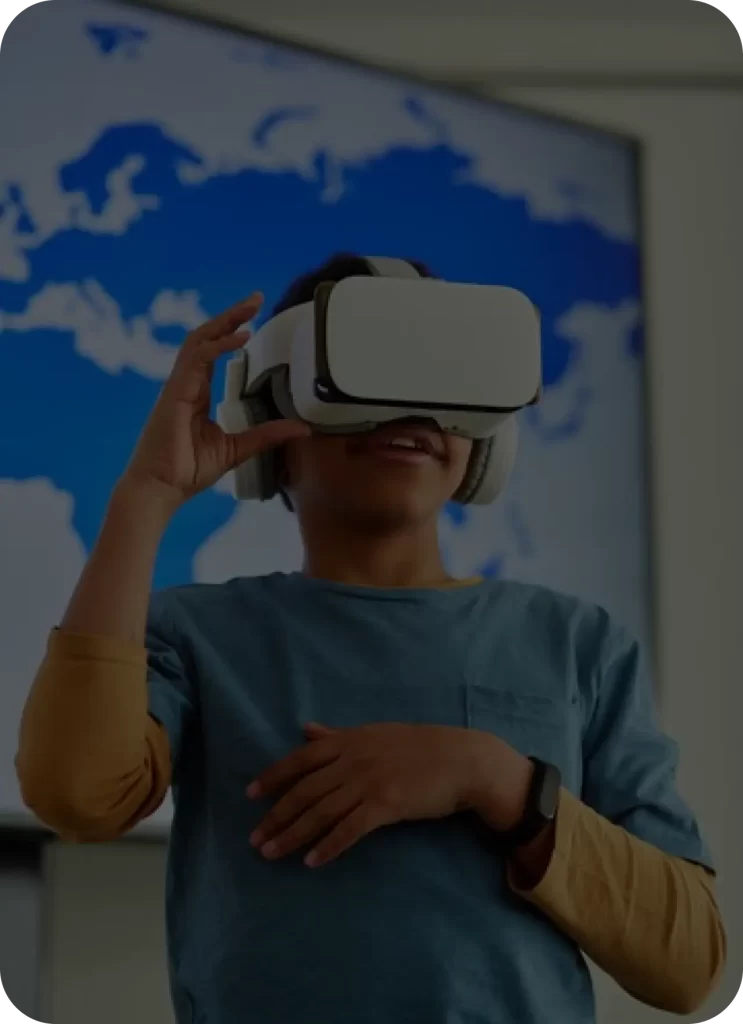The Advanced Guide to Augmented Reality App Development

Augmented reality is a huge technical trend, and its use is increasing as the demand for AR-ready smartphones grows. It allows smart gadgets to be easily accessed. The market for Augmented Reality App Development is booming. Augmented Reality allows users to interact with a real-world environment. Computer-generated perceptual information is used to enhance real-world things. AR can be thought of as a system that combines three fundamental characteristics:
- A hybrid of the physical and virtual worlds
- Virtual and real-world items are registered in three dimensions.
- Interaction in real-time.
The best thing about augmented reality technology is that it is easily available to anybody. There are no limitations to how you can use this fantastic technological advancement. The majority of people nowadays own smartphones, and AR apps allow users to experience augmented reality on their phones. This is why augmented reality is used in a variety of industries. With the advancement of Augmented Reality, the demand for AR app development services has skyrocketed. Businesses have begun to invest in new app development trends that cater to a variety of needs.
The Impact of Augmented and Virtual Reality on Various Industries and Businesses
Types of Augmented Reality
- Marker-Based Augmented Reality: Recognition-based AR is another name for marker-based AR. This type of AR delivers precise information on the thing that the AR system has detected. Marker-based AR has a wide range of applications in the industry. It detects the thing in front of the camera and displays the object’s full details on the screen. It simplifies the process of quickly generating correct information on a certain object. The marker, which has been replaced with the 3D version of the selected object, performs the object recognition. It allows people to have a close look at the thing. The 3D picture can also be rotated while the marker is rotated.
- Markerless Augmented Reality: This form of AR-based app is one of the most commonly used in the market. Location-based AR is another name for it. It incorporates a location detecting capability into the app. The travel sector is utilizing these apps to their full potential. Furthermore, people are more interested in travel mobile app development since it allows them to find local locations while they are still in their current location. The approach reads the GPS data, accelerometers, and digital compass on the phone while predicting the user’s focus. This sort of software focuses on delivering location information for an object that is placed in front of the user’s camera.
- Projection Augmented Reality: This is the most basic form of AR technology, which operates by projecting light onto a surface. Projection AR is an engaging and interactive experience that focuses on deceiving the user about the object’s orientation, depth, and position. Users can investigate the structure and depth of the structure by considering various objects. This technology is often used to create large-scale deployments for virtual reality experiences.
- Superimposition Based Augmented Reality: The existence of an object’s superimposition is demonstrated by the world itself. This AR provides a replacement view of the in-focus object. The application uses an augmented view to replace a partial or whole view of an object. Object recognition is crucial in this case.

Schedule a call to know more about AR/VR Applications and the cost to create the App.
Virtual and Augmented Reality
The enhanced version of real-world things is referred to as augmented reality (AR). It uses a computer-generated picture to convey extensive information about the thing under focus. The AR app development allows users to get a better glimpse at the real environment. It provides a large amount of data, including photographs, text, and a motion perspective of the object.
Virtual Reality (VR) is a computer-generated simulation that allows users to explore a distinct perspective of the actual world, such as animated scenes of photographic real-world things. The VR development company allows users to see places they’ve never visited before, such as the summit of Mount Everest, areas deep beneath the sea, and the surface of Mars. These apps allow users to travel to other worlds and experience virtual reality on Earth.
How Can You Create an Augmented Reality App for Your Company?
At first, applying your hands to new digital innovation may appear scary. However, mastering the latest technology becomes simple if your development process is broken down into edible portions and taken in little increments.
Here are the stages that must be taken into account when developing an AR mobile app:
- Validate an app concept that can help your company flourish.
- Analyzing your competition is the best technique to come up with the best app idea.
- Examine the available SDKs and AR app development platforms.
- Choose the one that best fits your budget, app concept, and company plan.
- The presence of 3D objects is required for AR to work. You have two options: either download pre-made models or learn how to make your own.
- Create a 2D tracker and a specific image to place on a surface and scan with AR-enabled devices.
- Create a one-of-a-kind design and all of the necessary text files, data, 3D models, and images.
- On your selected app development platform, combine all of the elements.
Efficient and Cost-effective Solutions to Solve Your Problems with Augmented Reality (AR/ VR) Services
It isn’t an exaggeration to say that Augmented Reality is a layer on top of reality. It does not replace the real world, but rather adds something to it. Without a question, it has become a fantastic business prospect. This realistic, entertaining, and augmented version of reality has proven to be a wise commercial investment. AR technology, in some ways, is uniquely enhancing the digital world.
Recent Posts
-
Key Considerations for Hiring Expert Software Developers
-
A Comprehensive Guide to Augmented Reality (AR) App Development
-
Unleashing Business Potential: Achieving Massive Outcomes with Big Data Analytics Services
-
Leveraging Salesforce Customer Data Platform (CDP) to Understand and Engage Customers
-
What are the benefits of using virtual reality solutions?






